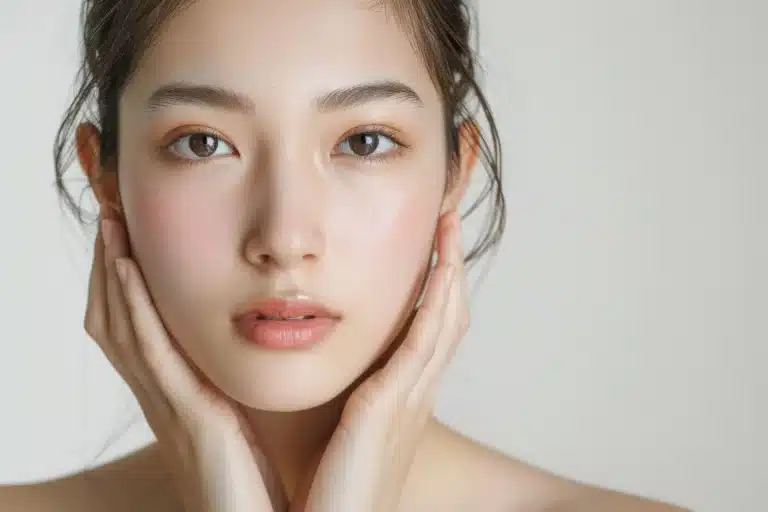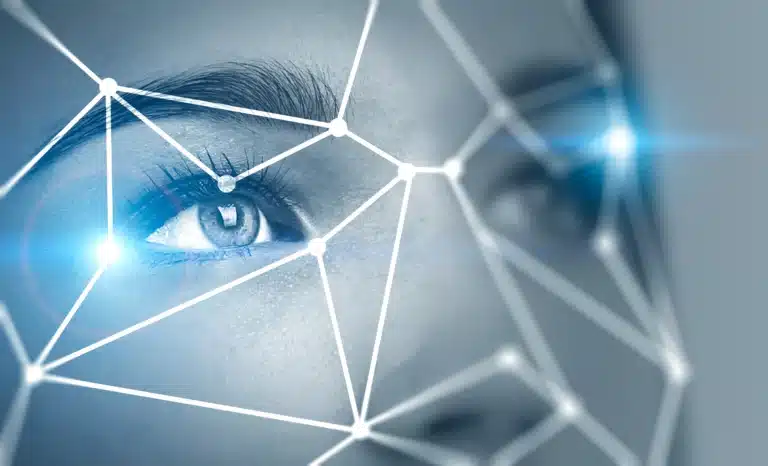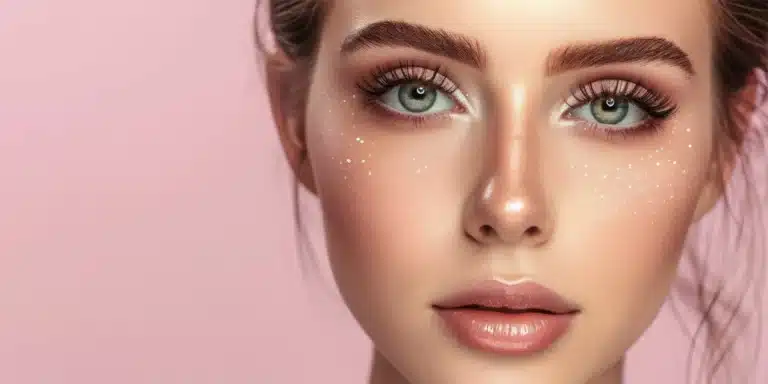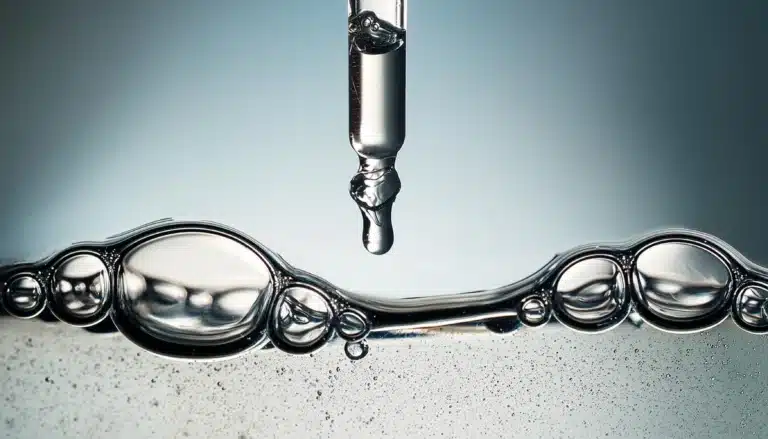Home » Conditions » Nose » Asian nose
The Asian nose is characterized by unique ethnic features, generally distinct from Caucasian or African noses. While these traits vary from person to person, they are often considered part of the natural and harmonious characteristics of Asian facial features.
However, some individuals may wish to refine, sculpt, or enhance certain areas of their nose while still preserving their ethnic identity.
Medical rhinoplasty has become an essential alternative to surgery for those who wish to subtly modify the appearance of their nose without undergoing invasive procedures.
For patients of Asian descent, whose nasal characteristics are often distinct, this non-invasive method offers an ideal solution to improve nasal aesthetics while respecting ethnic features.
Medical rhinoplasty for the Asian nose allows for subtle corrections, such as increasing the projection of the nasal bridge, refining the nasal tip, or correcting asymmetries, without the need for surgery.
In this article, we will explore in detail how medical rhinoplasty can be used to enhance the Asian nose.

The Asian nose presents unique characteristics that differ from those of Caucasian or African noses. These features may vary depending on geographic origin, but the following traits are often observed :
• A low or poorly defined nasal bridge : the projection of the nasal bridge is generally lower in Asian patients, which can result in a flatter profile.
• A rounded nasal tip : the nasal tip tends to be wider or more rounded, with less projection than in other ethnic groups.
• Wider nostrils : the base of the nose may appear broader due to the shape of the nostrils.
• Thick cartilage : the cartilage is often thicker, which can give the tip a broader appearance.
• Higher nose width-to-length ratio : ideally, the width-to-length ratio of the nose in Caucasian women is 0.7. In Asian individuals, it is around 1.1.
• Sharper nasolabial angle : the nasolabial angle in Asians is sharper than that of Caucasians, whose angle typically ranges between 90° and 120°.
• Wider nasal triangle : the nose fits into a triangle that is wider in Asians than in Caucasians. This triangle can be narrowed but should remain wider than in Caucasian profiles, as facial characteristics differ.
For patients of Asian descent who wish to make subtle improvements to their nose without undergoing surgical rhinoplasty, medical rhinoplasty offers an ideal solution to refine and sculpt the nose while respecting their natural ethnic features.

Medical rhinoplasty can be used to enhance several aspects of the Asian nose. The main areas that can be corrected include :
• Nasal bridge : the nasal bridge is often one of the first areas treated in a non-surgical rhinoplasty for Asian noses. This area typically has lower projection, resulting in a flatter profile. Hyaluronic acid injections help elevate the bridge and create a more defined curve while maintaining facial harmony.
• Nasal tip : the nasal tip in Asian patients tends to be broader and less defined. If a patient wishes to refine or enhance the projection of the tip, hyaluronic acid can be used to subtly reshape this area. This results in a sharper or more refined tip without the need for surgery.
• Nasal dorsum : the nasal dorsum can also be treated to smooth out minor irregularities or bumps on the nose. This helps create a straighter and more harmonious nasal profile.
• Nasal alae (nostrils) : injections can be used to slightly reduce the width of the nostrils and subtly adjust the volume around the nasal alae, giving the appearance of a slimmer and more balanced nose.

Medical rhinoplasty is particularly interesting for Asian noses because it allows subtle changes to be made without surgery. Here's why this technique is increasingly chosen by Asian patients:
• Préserver les traits ethniques :l’un des principaux objectifs de la rhinoplastie médicale sur un nez asiatique est de respecter et de préserver les traits ethniques tout en offrant une amélioration subtile. Contrairement à une rhinoplastie chirurgicale qui peut parfois donner des résultats trop transformateurs, la rhinoplastie médicale permet d’ajuster la forme du nez de manière douce et naturelle, sans altérer l’identité du patient. Les patients ne cherchent pas une occidentalisation du nez mais un embellissement afin que le nez soit harmonieux dans le visage.
- Improving the nasal bridge without surgery: one of the most frequent requests from Asian patients concerns the projection of the nasal bridge, which is often flatter or less defined than in other ethnic groups. Medical rhinoplasty uses hyaluronic acid injections to enhance the bridge of the nose and give it greater definition. This method is quick, requires no social contact and gives immediate results.
- Immediate and adjustable results: another advantage of medical rhinoplasty is that the results are visible immediately after the procedure, so patients can see the effects quickly. What's more, these results are adjustable: if the patient is not satisfied with the final result, it is possible to dissolve the hyaluronic acid or correct the volumes with a new injection. This flexibility is particularly appreciated when it comes to adjusting the proportions of the nose to suit individual aesthetic preferences.
- No social withdrawal: unlike surgery, which often requires several weeks' convalescence, medical rhinoplasty is a fast procedure that requires no recovery time. Patients can resume their normal activities immediately after the session, with only minor redness or swelling that disappears within a few hours or days.
• Amélioration subtile et naturelle : la rhinoplastie médicale permet d’obtenir des résultats subtils et naturels, sans “l’effet opéré”. Les corrections apportées sont douces et progressives, ce qui donne au nez un aspect harmonieux sans bouleverser l’équilibre global du visage.

L’hyaluronic acid est l’unique produit de comblement qui peut être utilisé en rhinoplastie médicale : le Radiesse, le collagène et le Sculptra sont contre-indiqués. Ce produit permet de sculpter les contours du nez, d’ajouter du volume à l’arête nasale ou à la pointe et de gommer certaines imperfections.
The results are visible immediately after the injection, and generally last between 9 and 12 months before the product is reabsorbed by the body.
Non-surgical rhinoplasty is a simple and quick procedure, performed in-office by an experienced doctor.
Before the procedure, a consultation is necessary to evaluate the patient’s aesthetic goals and discuss the desired results. The doctor will analyze the structure of the nose and propose a personalized treatment plan.
Before the injection, the skin is disinfected. A numbing cream may be applied to minimize discomfort during the procedure.
Dr. Romano injects small amounts of hyaluronic acid into the targeted areas of the nose. The product is injected using a fine cannula to ensure even distribution and a natural result. Dr. Romano exclusively uses the cannula to avoid any risk of necrosis.

Increasingly popular in Korea, Japan, and Taiwan, the Nose Thread Lift is a non-surgical nose lift using tensor threads.
These threads are used to define and straighten the nasal contour, project the dorsum, lift the tip, and enhance the definition of the nasal base.
The threads are resorbable, and the results typically last around one year.
After local anesthesia, PDO threads are placed along the columella and dorsum. The placement path, thread type, and depth depend on the patient’s nasal anatomy.
Non-surgical rhinoplasty offers numerous benefits for Asian patients looking to enhance their noses without surgery.
• Natural and subtle results : one of the key advantages of non-surgical rhinoplasty is achieving subtle and natural-looking results. The refinements are done gently, without drastic transformation, ensuring the nose remains proportionate and harmonious with Asian facial features.
• Quick and non-invasive procedure : this technique is fast, requiring no surgery, no general anesthesia, and no social downtime. Patients can resume their daily activities immediately after the session.
• Reversible results : since hyaluronic acid is a naturally occurring substance in the body, it can be dissolved if the patient is not satisfied with the outcome. This allows for adjustments or corrections without permanent effects.
• No recovery time : unlike surgical rhinoplasty, non-surgical rhinoplasty requires no recovery period. Patients can go back to their normal routines immediately after the procedure.
The price of medical rhinoplasty for the Asian nose varies depending on the technique used and the patient’s specific needs.
Hyaluronic acid injections are offered at 750 CHF per syringe. In cases involving Asian noses, where projection and definition are often sought, two syringes may sometimes be necessary depending on the morphology and the desired result.
Nose threads, used alone or in combination, allow for structured lifting and projection of the nasal bridge or tip. The price of a thread lift session for the nose is 750 CHF.
The total cost of Asian nose treatment is assessed during consultation, based on the chosen strategy.
Asian patients often seek increased nasal projection, better tip definition, and overall refinement—while preserving their ethnic features.
Il est essentiel d’adopter une approche personnalisée qui respecte les traits ethniques, en évitant une occidentalisation excessive, pour maintenir l’harmonie faciale.
Oui, des injections d’acide hyaluronique permettent d’allonger et de projeter un nez jugé trop court, offrant une alternative non chirurgicale efficace.
L’injection d’acide hyaluronique dans la pointe du nez peut améliorer sa définition et le rendre plus fin et plus structuré.
Oui, la rhinoplastie médicale peut corriger les irrégularités mineures de l’arête nasale, contribuant à un aspect plus droit et harmonieux.